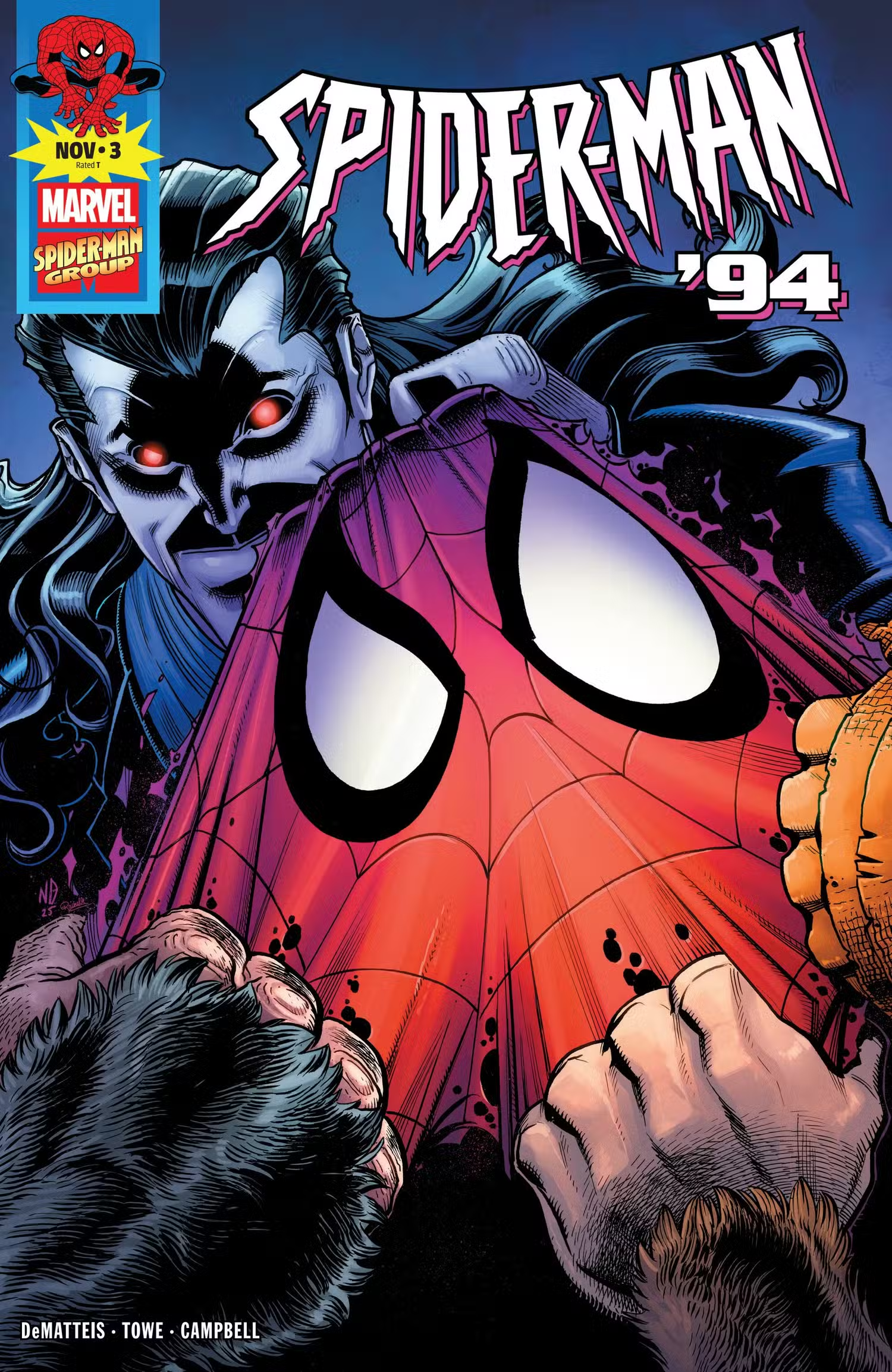
As I’ve noted for the majority of this series, what’s been so interesting about this title so far is the fact that writer JM DeMatteis has given us the best of both worlds with this book. The book appeals to fans who have just watched it Spider-Man: The Animated Seriesbut it also appeals to fans who have only read Spider-Man’s comic book adventures. This was mainly achieved through DeMatteis cleverly blending the two styles.
This issue continues that trend, as DeMatteis actually seems to return to probably his most famous Spider-Man storyline of all time in this issue, which is Kraven’s Last Hunt, and the way he adapts it is fascinating in that it ties into one of the main plot points of this new series, which is Spider-Man and Mary Jane reuniting.
Spider-Man ’94 #2 is by writer JM DeMatteis, artist Jim Towe, colorist Jim Campbell, and letterer Joe Caramagna, and continues the adaptation of the character Morlun into the continuity of the Spider-Man animated series that we saw in the first two issues of the book. In fact, this issue gives us a whole new origin for Morlun!
What is Morlun’s new origin?
DeMatteis seems to have had a completely free hand when it comes to giving Morlun a new origin, and he really seems to have taken that liberty and run with it, as Morlun’s origin in this comic is MILES away from any other origin we’ve been given for Morlun. DeMatteis connects Morlun to the Celestials and establishes that he has been on Earth for centuries and left his realm to travel the world, learning magic and other things.
He returns to his kingdom and discovers that it is besieged by totems, a sort of mixture between man and beast. Morlun discovered that he had the ability to devour these totems, and he used this ability as he fought them for centuries, going into hibernation on occasion, sleeping for years or even decades at a time.
Eventually, however, Morlun decided to create the identity of Ezekiel Sims in the 19th century (this is one of the biggest changes in his history, as now Morlun and Ezekiel, rather than being rivals, are the same person!), and create the Sims Company, then run the company throughout the next century and a half, constantly replacing himself as his own son, grandson, etc. However, in modern times, he has learned that he must absorb more totems than ever before. before, which is why he started cloning himself for food.
It’s fascinating how Morlun has such an inflated sense of self that he truly believes that Spider-Man should be GRATEFUL that his “sacrifice” will allow Morlun to live and do more great things with the world. Spider-Man, of course, disagrees with this stance, but since he’s been enveloped in a cocooned state, he doesn’t have much say in his situation…or does he?
How does this story evoke Kraven’s Last Hunt?
As noted, one of the most famous Spider-Man storylines of all time is Kraven’s Last Hunt, which DeMatteis wrote with artists Mike Zeck and John Beatty (and colors by Janet Jackson and letters by Rick Parker), and right off the bat, the fact that Kraven the Hunter is, in fact, in that issue is already reason to tie this issue into that story, but there’s also a much more notable connection. You see, “Kraven’s Last Hunt” was one of the first Spider-Man stories written after Peter Parker and Mary Jane Watson married in the original comics.
Therefore, there’s an iconic sequence where Peter was buried alive by Kraven, and he was placed in some sort of drugged coma (so he wouldn’t die), and Spider-Man is sort of ready to give up, but he realizes he CAN’T, because he has to get back to Mary Jane. This leads to an epic sequence where Peter’s love for Mary Jane forces him to dig himself out of the ground. DeMatteis and Towe do a similar sequence in his act, except it’s with the cocoon Morlun is holding him in instead. Towe draws this sequence very well.
Meanwhile, Morlun’s clone, Kaine, had some sort of strange connection with Spider-Man. In the original comics, Kaine is a failed clone of Peter Parker, while here he is a degenerative clone of Morlun, but he has a psychic connection to Spider-Man, which also leads him to become obsessed with Mary Jane.
Speaking of Mary Jane, we learned last issue that Aunt May knew Peter Parker’s secret identity, and she confronted Mary Jane about it last issue. In this issue, Mary Jane and May have a sweet conversation about the burden Peter carries, but also the burden THEY carry by being involved with Peter while knowing his secret. It’s a touching set of pages, which shouldn’t be surprising, considering how touching DeMatteis’s handling of Aunt May’s death was. Amazing Spider-Man #400.
Kraven returns at the end of the issue, after Peter breaks free, and it looks like the next issue might lean even more into this series’ “Kraven’s Last Hunt” approach. But whether that’s the case or not, it’s still interesting to see how well DeMatteis has merged all of these disparate stories into one cohesive narrative, and it will be interesting to see how Morlun and Kaine’s stories come to fruition.
This series continues to delight anime or comic book fans, but honestly I think it’s also a delight only for those who enjoy seeing someone put together a compelling narrative from a number of disparate elements. You don’t need to know ANY continuity to appreciate the work of a talented writer like DeMatteis tying all of these stories together.
Source: Wonder
